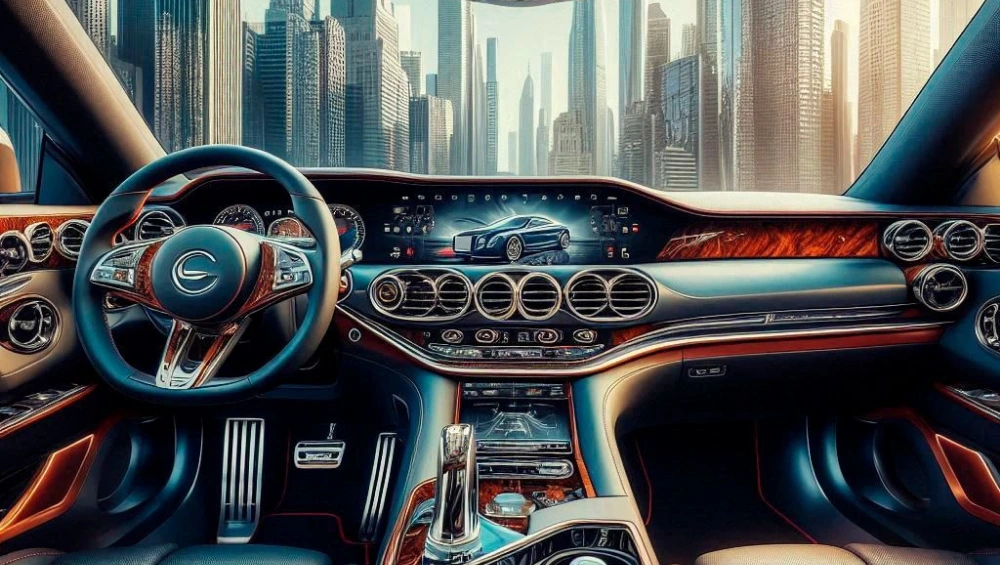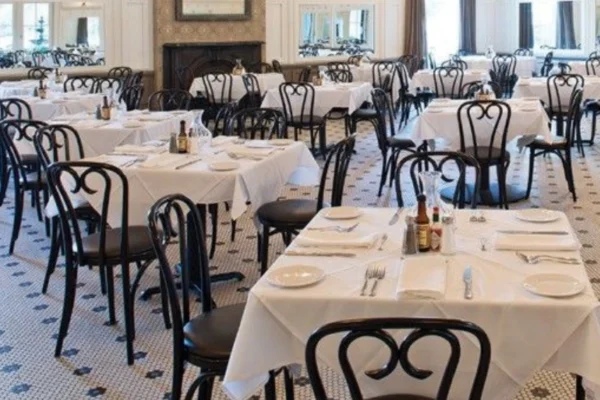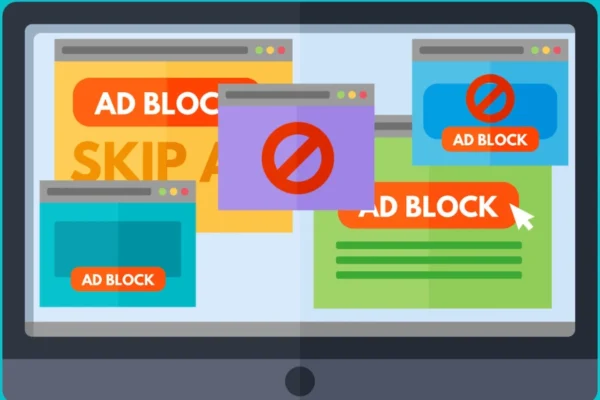In 2025, custom car interior design is at the forefront of automotive personalization. No longer just about adding upholstery or trim upgrades, modern custom interiors blend high‑performance materials, smart tech, sustainable components, and expertly curated aesthetics. Whether you’re customizing a luxury SUV, sports coupe, or electric vehicle, custom car interior design offers a way to create a cabin that reflects your unique style, comfort preferences, and technological requirements. This comprehensive guide explores the latest trends, the best materials, cutting‑edge tech features, and expert tips to help you design your ideal car interior.
1. Why Custom Car Interior Design Matters in 2025
Custom car interior design has evolved beyond aftermarket flair—it’s now about functional luxury, wellness, and personalization. As automakers offer more standard features, enthusiasts and owners turn to customization to stand out. Personalized interiors enhance comfort, improve driving ergonomics, boost resale value, and provide emotional satisfaction that factory options often lack.
2. Trending Styles & Aesthetics
-
Minimalist Luxury: Clean lines, soft ambient lighting, and muted tones—ideal for custom car interior design lovers who want a refined, modern cabin.
-
Sport‑Inspired Racing Themes: Bold contrast stitching, carbon fiber accents, performance seats, and Alcantara or suede elements give a track‑ready feel.
-
Retro Modern Fusion: Vintage materials like houndstooth fabric and polished wood trim paired with high‑tech digital displays appeal to those seeking nostalgia and novelty through a custom car.
-
Eco‑Chic & Green Interiors: Organic colors, sustainable leathers or vegan alternatives, and natural textures are increasingly popular in custom car design for eco-conscious drivers.
3. Material Innovations for 2025
Eco Leather & Vegan Options
High-quality vegan leather made from recycled microfibers, cork, and cactus fiber is now widely available. These materials offer excellent durability, a premium feel, and align with sustainable custom car interior design principles. If you want a deeper dive into the pros and cons of different interior fabrics, check out this guide to automotive interior materials from Car and Driver.
Advanced Composites
Carbon fiber seat shells, woven textile blends, and lightweight recycled panels are increasingly used in performance‑oriented or modern custom car design projects.
Temperature‑Adaptive Fabrics
Innovative textiles that actively regulate cabin temperature—cool in summer, warm in winter—are gaining traction in custom car design, improving driver and passenger comfort.
4. Smart Tech Integration
Ambient & Adaptive Lighting
360° ambient lighting systems with zones you can customize by color, intensity, and pattern are central to modern custom car interior design. They can sync with music, GPS cues, or driver mood settings.
Multi‑Functional Touch Panels
Integrated OLED or capacitive touch panels on the center console, door trims, and rear seat backs bring seamless control to HVAC, media, seat configurations, and lighting—hallmarks of an advanced custom car.
Haptic & Gesture Controls
Gesture control interfaces and haptic feedback buttons reduce driver distraction and add a futuristic touch to custom car interior design cabins.
Integrated Wellness Features
Features like built-in air-purifiers, aromatherapy diffusers, UV‑light surface sanitizers, and posture‑aware seat adjustments now appear in high-end car interior design installs.
5. Seating & Ergonomics
-
Custom-Molded Seats: Tailor seats to your body with memory foam or 3D-printed supports for ultimate comfort in interior design.
-
Heated, Ventilated & Massaging Seats: These multifunction seats are standard in premium custom car interior design concepts.
-
Adjustable Bolstering: For sport or daily driving modes—great for those who want comfort and performance in the same cabin.
6. Color Palettes & Stitching Choices
-
Monochrome with Accents: Base tones of charcoal, taupe, or cream with bold accent colors like red, teal, or gold—common in modern custom car interior design.
-
Contrast Stitching & Piping: Bright thread or piping details along seats, doors, and the steering wheel give a handcrafted look.
-
Personal Embroidery & Logos: Custom logos or monograms stitched into headrests, mats, and sun visors elevate the bespoke feel of custom car interior design.
7. Dashboards, Trim & Finishes
-
Brushed Metal & Wood Veneer Trim: Choose matte or gloss finishes paired with laser-etched patterns for a fusion of luxury and modernity in custom car interior design.
-
Carbon Fiber or Matte Finishes: Popular in sport-tuned or minimalist cabins—used on dashboards, door cards, and center tunnels.
-
Digital Décor Panels: Thin‑film displays integrated into trim surfaces can show branding, ambient graphics, or navigation cues as part of custom car interior design.
8. Audio & Connectivity
-
Custom Speaker Layouts: Tucked into headrests, doors, and A-pillars for immersive sound in custom car interior design.
-
Wireless Charging Pads & USB‑C Hub: Positioned ergonomically in cupholder trays and center consoles—essential for modern cabins.
-
App-Based Settings & Profiles: Personal settings saved to driver profiles that sync seat position, lighting, and media preferences—key to personalized custom car interior design.
9. Safety & Visibility Enhancements
-
Heads-Up Displays (HUDs): Transparent displays projected onto the windscreen or dash—integrated into themed custom car interior design dashboards.
-
360° Parking Cameras & Sensors: Seamlessly integrated into trim packages for a clean appearance in custom car interior design.
-
Enhanced UV & Glare‑Blocking Glass: Embedded in sunroofs or side windows, enhances comfort in climate‑controlled custom car interior design cabins.
10. Custom Car Interior Design for EVs & Autonomous Vehicles
Electric and autonomous models offer unique flexibility for customization:
-
Swivel Seats & Lounge Layouts: In autonomous mode, front seats may turn to face the rear passenger area, supported through flexible custom car interior design modules.
-
Rechargeable Panels & Fold‑Out Tables: For in-ride work or leisure, typical features in custom car interior design for ride-long journeys.
-
Ambient Wellness Cabins: Airflow zoning, lighting synced to circadian rhythms, and infotainment pods—innovations in custom car interior design for next-gen mobility.
11. Budgeting & Project Planning
To execute a successful custom car interior design, plan carefully:
-
Scope Definition: Seat upgrades, trim, tech, lighting—determine pieces you want to customize.
-
Budget Tiers:
-
Basic (~$2,000–5,000): Upholstery, steering, small trim upgrades
-
Mid-Level (~$5,000–15,000): Leather, lighting, seat heaters, basic infotainment
-
Premium ($15,000+): Full dashboard redesign, custom interface, performance seating, wellness tech
-
-
Timeframe: Custom installations can take from 2–4 weeks (smaller jobs) to 8–12+ weeks for full cabin redesigns.
-
Qualified Installers: Choose installers who specialize in custom car interior design, have good testimonials, and warranty their work.
12. Case Studies & Inspiration
-
Luxury Sedan Upgrade: A 2025 sedan was fitted with quilted vegan leather, multicolored ambient lighting, OLED touch strips on doors, and seat massage—all just under $12,000.
-
Sport Coupe Conversion: Driver-focused minimalist design with carbon fiber trims, Alcantara bolstered seats, and gesture-control infotainment interface—excellent example of performance‑oriented custom car interior design.
-
EV Concept Cabin: Fully adaptable lounge seats, integrated wellness modules, and personalized lighting profiles—showcasing how custom car interior design can define future mobility.
13. Maintenance & Longevity
-
Cleaning & Care: Use appropriate cleaners for leather, eco materials, and tech touch surfaces—especially OLED panels.
-
Software Updates: Many smart interior systems require periodic firmware updates to maintain functionality.
-
Warranty & Service Plans: Opt for extended coverage if systems like ambient lighting, climate fabrics, or haptic controls are integrated into your custom car interior design.
Conclusion
By 2025, custom car interior design will have become a sophisticated blend of luxury, comfort, sustainability, and advanced tech. Whether you’re planning upholstery upgrades, integrating smart lighting, installing performance seats, or designing a wellness-focused EV cabin, the possibilities for personalization are virtually limitless. Following trends in materials like eco-leather and adaptive fabrics, embracing interactive ambient lighting and wellness features, and planning with realistic budgets will allow you to create a space that reflects your taste and elevates your driving experience.
If you’re ready to begin your journey toward the ultimate customized car interior, start by identifying your priorities—comfort, style, tech—and partner with skilled installers or interior designers who understand the latest in custom car interior design. Your dream cabin awaits!








